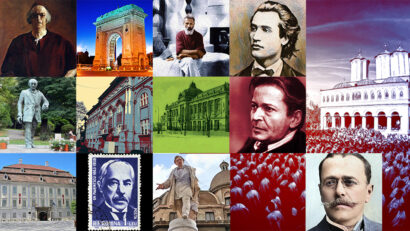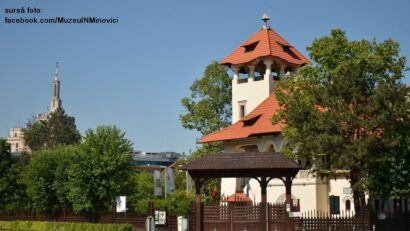A history of the city of Bistrita
Bistrita, one of the seven Saxon fortified cities known by their Saxon name of Siebenburgen, has a long history that goes back to the first wave of German settlers in Transylvania

Christine Leșcu, 01.09.2018, 12:00
The northern part of Transylvania was seemingly colonized by Saxons from around the present-day Luxembourg starting in the 13th century.
Art historian Vasile Duda has more on the citys first mention in documents: “On April 2nd 1241, during the great Tartar invasion, which destroyed a significant part of Transylvania and of Eastern Europe, this city was first documented under the name of Nosa. And this name was quite similar to other cities around Luxembourg, which made us think that the first settlers gave Bistrita a name inspired from their native regions. The citys current name, Bistrita, first appeared in documents on July 16th 1264 and was borrowed from the name of the river nearby. The name has a Slavic origin: ‘bistro or ‘bastro means fast, as Bistrita was a fast-flowing river. Bistrita got its city status back in 1330 after King Carol Robert of Anjou had granted its inhabitants the right to freely elect their judges and jury. These rights were only granted to cities. Bistrita was to enjoy more privileges under the rule of the Anjou family, such as the right to hold the largest fair in the region, on St. Bartholomew Day, (August 24th) which used to last for two or three weeks back in those days. The fair was Bistritas main source of income until modern days.
The building of a fortress with strong walls, towers and three entrance gates to the city, enforced by mobile bridges and moats, started in Bistrita in 1465. This is how Bistrita became once again one of the strongest fortified cities in Transylvania, but also one of the most beautiful.
Vasile Duda: “In 1564, an Italian traveler through Transylvania tried to make a brief presentation of the cities and fortifications that he saw there. He used to say: ‘Sibiu is the strongest, Cluj is the most popular and Bistrita is the most beautiful. The peak of the citys development was recorded in the 16th century, and that is why many monuments were built in the late 15th and early 16th centuries. Among them, the church in the Central Square, which used to be Roman – Catholic and turned Evangelical in 1543, and which has the highest tower in Transylvania. I would also like to mention the old church of the Franciscan monastery, built in the 13th century, which later became a Greek-Catholic church and which is now an Orthodox church. This is one of the oldest constructions in the city, erected in 1290. I would also like to add the Sugalete Ensemble, the longest string of medieval arched houses, built in 1480. Also worth mentioning are the Ion Zidaru House or the Andreas Beuchel House, from the 1480-1520 period.
The citys traditional coat of arms dates back to the same flourishing period for Bistrita, namely the late Middle Ages and the early Renaissance. It represents an ostrich with a horseshoe in its beak. This coat of arms was offered to the city by Louis I, Duke of Anjou, in 1366. It was actually the private coat of arms of the Anjou family.
Vasile Duda: “Why this coat of arms? It seems that in the Middle Ages, in the 13th century or the 14th century, the ostrich was considered by West Europeans as the most powerful bird able to digest iron and swallow anything. Thus, it was used by the Anjou family when they claimed the throne of Hungary and entered into conflict with the Hungarian noblemen. In this sense, it became a symbol of royalty in Transylvania and Hungary, being donated to the cities. The bird was appreciated for its capacity to digest iron, being associated with blacksmiths.
Consequently, the donation of this coat of arms to Bistrita might be related to the citys blacksmiths guild, one of the most powerful associations of the kind.





























